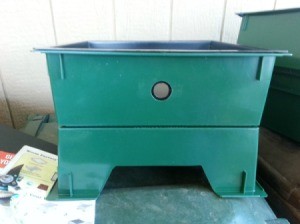 There are many ways to compost. One of the most beneficial is vermicomposting or worm composting with a worm farm composting tower. There are many prefab worm composters on the market. I chose the lowest maintenance one that I could find. The worm tower comes in pieces and you can add more trays as needed. Vermicomposting is fun and doesn't take much work once its set up.
There are many ways to compost. One of the most beneficial is vermicomposting or worm composting with a worm farm composting tower. There are many prefab worm composters on the market. I chose the lowest maintenance one that I could find. The worm tower comes in pieces and you can add more trays as needed. Vermicomposting is fun and doesn't take much work once its set up.
First off, in the instructions it goes on about using coconut husks, small pumice rocks, and a precise mix of this and that. Most of which are "not" cheap or easy to find ingredients.
Forget those instructions. I have found that a mixture of kitchen scraps, peat moss, and shredded or cut up paper and cardboard works best. These are pictures of how I set up my worm tower around three or so months ago. You want to set up your tray a little ahead of when you get your worms. This saves time and has a home ready for when they arrive. I ordered both my worm tower and the red wigglers from Uncle Jim's Worm Farm. They are very knowledgeable and so far every worm has arrived alive and well.
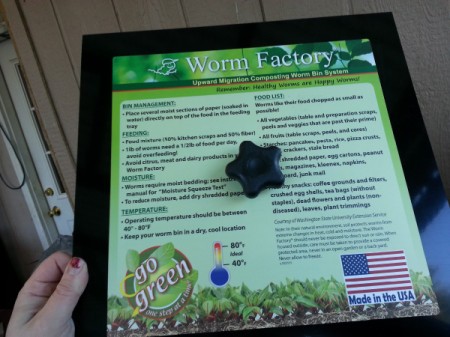
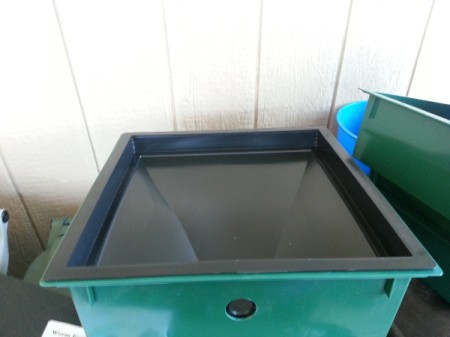
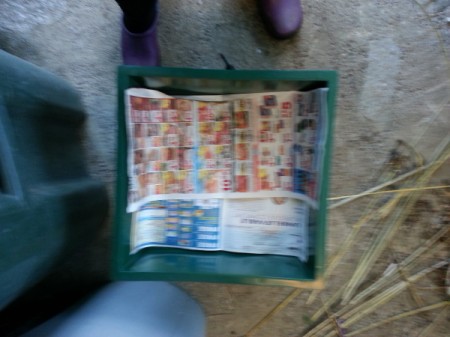
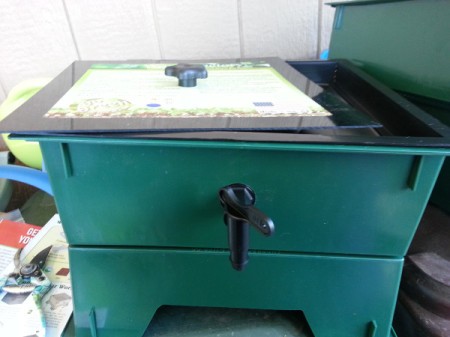
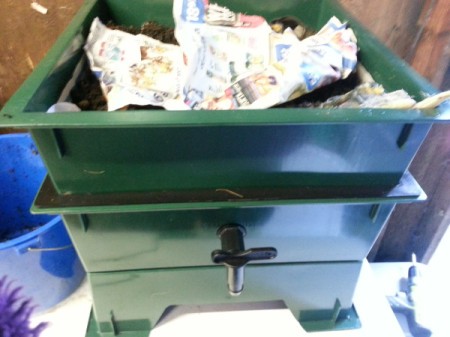
Some say you should grind your food scraps up in a blender, because worms don't like large pieces of food. This is hogwash. The only benefit to grinding up the food scraps is that the worms break it down faster that way. With the paper you do want fairly small pieces as it's a bit slow to break down and needs to fit in the the trays.
The only work I have aside from moving some dirt around and putting in more food scraps about every two weeks or so, is cutting up or shredding paper. I have found it's much easier to do with help and fun to do sitting outside or watching TV. I keep a reusable shopping bag about half full of cut up or torn paper scraps. If you have a shredder then its even easier!
It is also important to watch your moisture levels. You don't want it too dry. They say you should be able to squeeze a handful of the paper and peat moss and get a few drops, but not a steady stream of water. I mix it in a bucket with water as I use or need it. If the decomposing food makes the moisture level a bit too high it's OK to add dry peat and paper to absorb excess moisture. Once the worm farm is up and running it only takes small amounts at a time so I mix water, peat moss, and paper in a small bucket and knead it a bit or mix it with the garden spade.
You want to place your vermicomposter out of direct sunlight. On a covered porch or in a garage is great. You don't want your worms to get too cold or too hot. Keeping a light on over the composter is a good idea when first getting started. It keeps the worms in the composter as they hate light. Vermicomposters are also great if you have chickens. The birds go bonkers for earthworms! We give them earthworms in the winter when pickings are slim for bugs.
This is the set up and progress of my worm composting tower. I have included pictures of the first tray which is full and almost black now and a new tray.

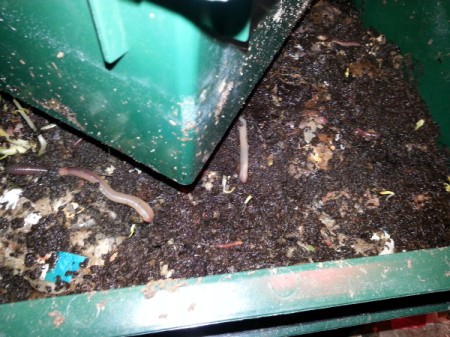
Add your voice! Click below to comment. ThriftyFun is powered by your wisdom!